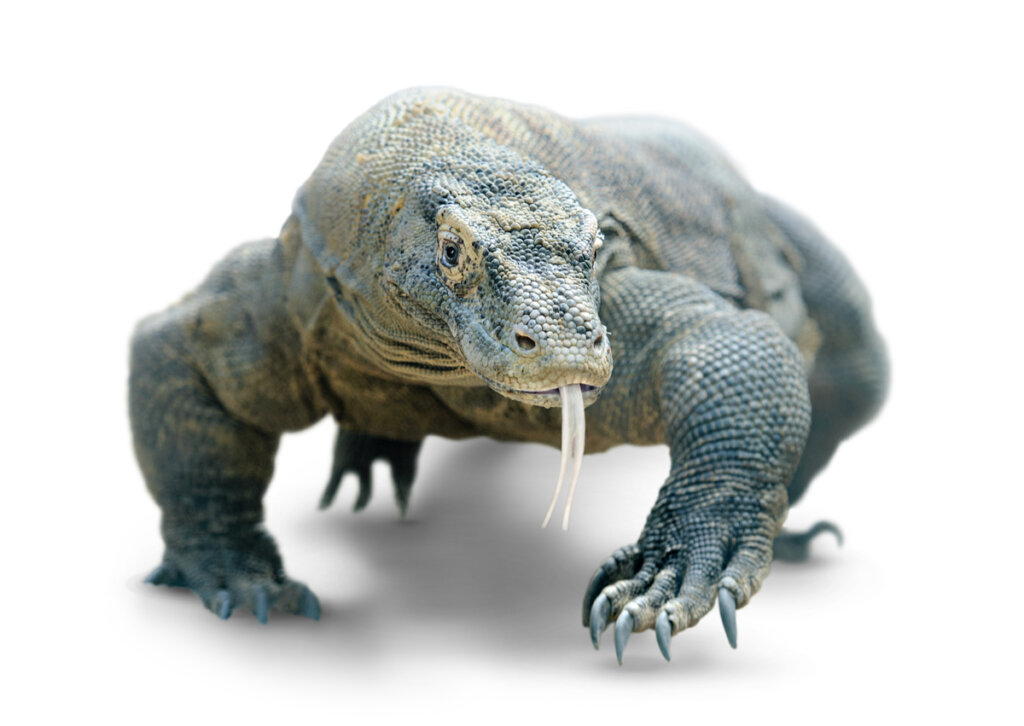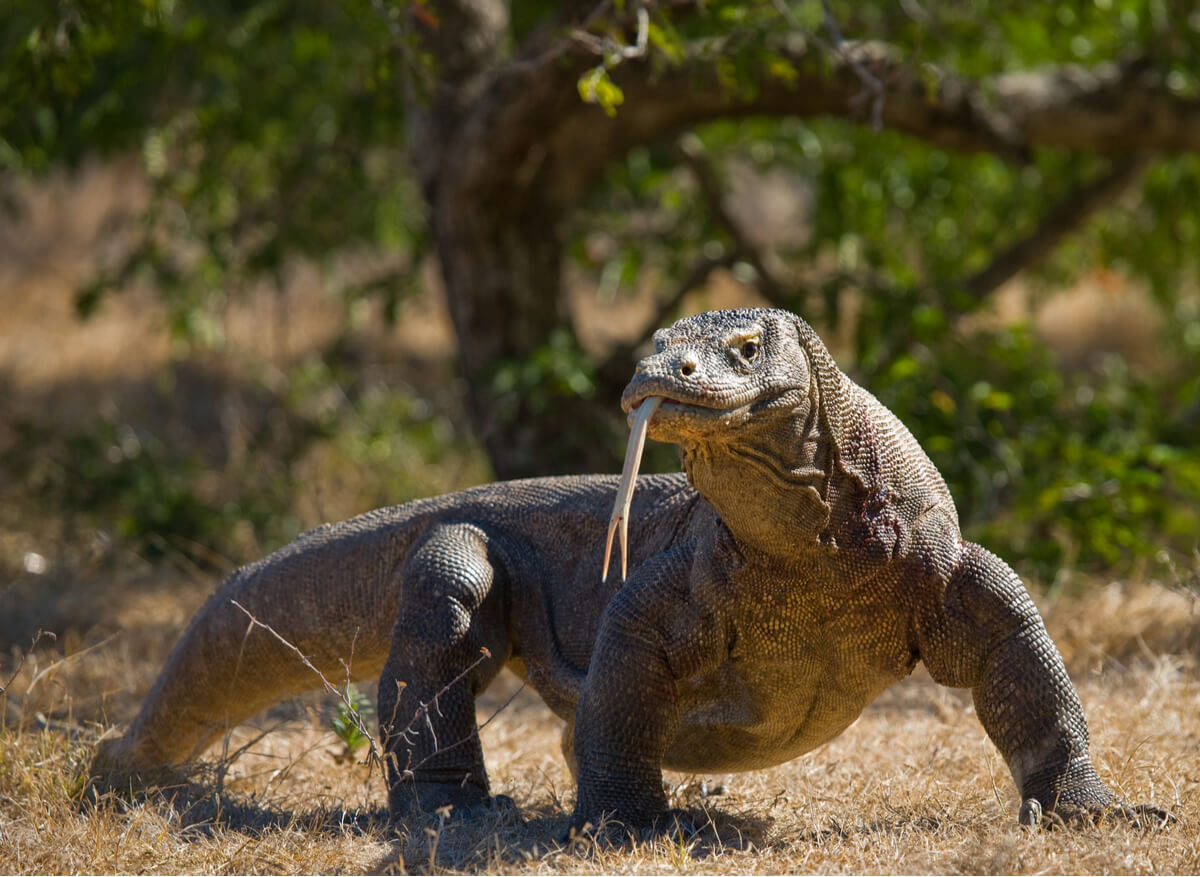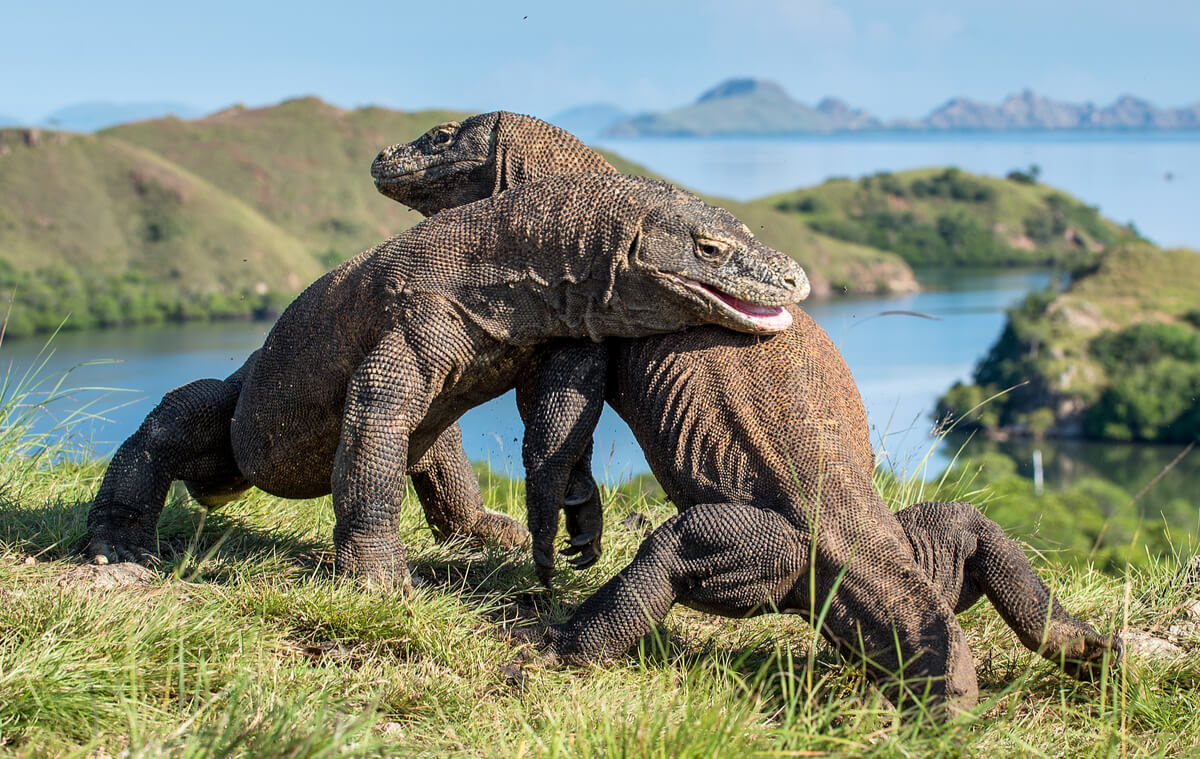Why Is a Komodo Dragon Bite Dangerous?

In nature, many animals should only be observed from afar. The venom of snakes, the powerful jaws of the crocodile, the swift claws of the lion, or the dangerous bite of the Komodo dragon are clear examples.
These reptiles are the largest lizards in the world – stay with us and find out all about them.
The Komodo dragon: a huge lizard
These reptiles bear the legendary name of the dragon, a mythological creature that bears quite a startling resemblance to these animals.
The Komodo dragon belongs to the monitor lizard family and is endemic to Indonesia. At present, the species is listed as vulnerable in the IUCN Red List.
It’s about three meters long and weighs about 70 kilograms (155 pounds), but can exceed 100 kilograms (220 pounds) in weight.
Its muscular body is covered with scales, and the youngest ones are greenish in color with yellowish and black spots. Adults tend to be more brownish in color. The tail is as strong and long as the rest of its body; its claws are also large and divided into five long toes.

Is the Komodo dragon aggressive?
Its large size and hissing sound is sometimes enough of a show of power to avoid a confrontation. These animals usually eat in groups when food is plentiful, but fights over food or females can occur if necessary.
They have a great response speed and often lure their prey into the water where they await them. There have been several fatal attacks on humans due to their bite, but these are rare cases. This animal doesn’t usually leave its habitat to harm others if it has sufficient resources.
Fights between Komodo dragons are hand-to-hand confrontations, as one individual usually tries to grab and injure another. Interestingly, these animals are immune to their own bite.
The dangerous bite of the Komodo dragon
It isn’t poison that makes the bite of the Komodo dragon dangerous, it’s its saliva. Komodo dragon teeth are hidden behind the gums and often bleed while feeding. They don’t inject venom as a snake would, as their saliva is toxic enough to kill.
Although they’re scavengers, they also hunt their prey. Komodo dragons are capable of killing animals larger than themselves with a single bite, such as deer and wild boar.
They take advantage of the surprise factor to ambush their prey and, after biting it, retreat to a safe distance until the prey collapses. Bites often cause deep tears in the soft tissue of other animals.
If the prey manages to flee, it will probably bleed to death or its wounds will become seriously infected. They feed on mammals, birds, eggs, and other lizards, even individuals of their own species.
Their saliva contains a large amount of pathogenic bacteria (Escherichia coli, Pasteurella multocida, Staphylococcus sp. Providencia sp. Proteus mirabilis and P. morganii among them) that can cause generalized sepsis, but these aren’t the only causes of death in Komodo dragon victims.
In the dragon’s jaw, glands secrete a series of compounds that prevent blood clotting and cause a drop in blood pressure, hypothermia, and muscular paralysis, so that the bitten animal quickly bleeds to death and dies shortly thereafter.
This lethal saliva has been studied in order to isolate and take advantage of its anticoagulant compounds in the treatment of diseases related to thrombosis and other cardiovascular problems.
Does parthenogenesis exist in Komodo dragons?
This is another great peculiarity of the species. Dragons have both sexual and asexual reproduction. This means that females can lay eggs that aren’t fertilized by a male.
This can occur in the wild, but is only known to occur in captive-bred females. Parthenogenetic broods give rise only to male individuals.
The parent contributes a single copy of its chromosomes, which are duplicated in the egg phase, changing from haploid to diploid. If the female subsequently reproduces with her offspring, she can lay eggs of both males and females.
Scientists believe that this reproductive strategy is an adaptation to an isolated ecological niche, such as the dragon’s habitat. In this way, the population continues to grow, although genetic diversity decreases.

Komodo dragons are as fascinating as their name suggests, as with the appearance and fierceness of a real dinosaur they’re able to survive the destruction of their habitat, and show themselves to be fearsome predators. Their deadly bite and unique ability to perpetuate the species make them living legends.
All cited sources were thoroughly reviewed by our team to ensure their quality, reliability, currency, and validity. The bibliography of this article was considered reliable and of academic or scientific accuracy.
- A central role for venom in predation by Varanus komodoensis (Komodo Dragon) and the extinct giant Varanus (Megalania) priscus.
- National Geographic. El dragón de Komodo, el lagarto más grande del mundo, 2018.
- Lind, A.L., Lai, Y.Y.Y., Mostovoy, Y. et al. Genome of the Komodo dragon reveals adaptations in the cardiovascular and chemosensory systems of monitor lizards. Nat Ecol Evol 3, 1241–1252 (2019).
- BBC News. ‘Virgin births’ for giant lizards. 2006.
- Goldstein, E. J., Tyrrell, K. L., Citron, D. M., Cox, C. R., Recchio, I. M., Okimoto, B., … & Fry, B. G. (2013). Anaerobic and aerobic bacteriology of the saliva and gingiva from 16 captive Komodo dragons (Varanus komodoensis): new implications for the” bacteria as venom” model. Journal of Zoo and Wildlife Medicine, 262-272.
- Watts, P. C., Buley, K. R., Sanderson, S., Boardman, W., Ciofi, C., & Gibson, R. (2006). Parthenogenesis in Komodo dragons. Nature, 444(7122), 1021-1022.